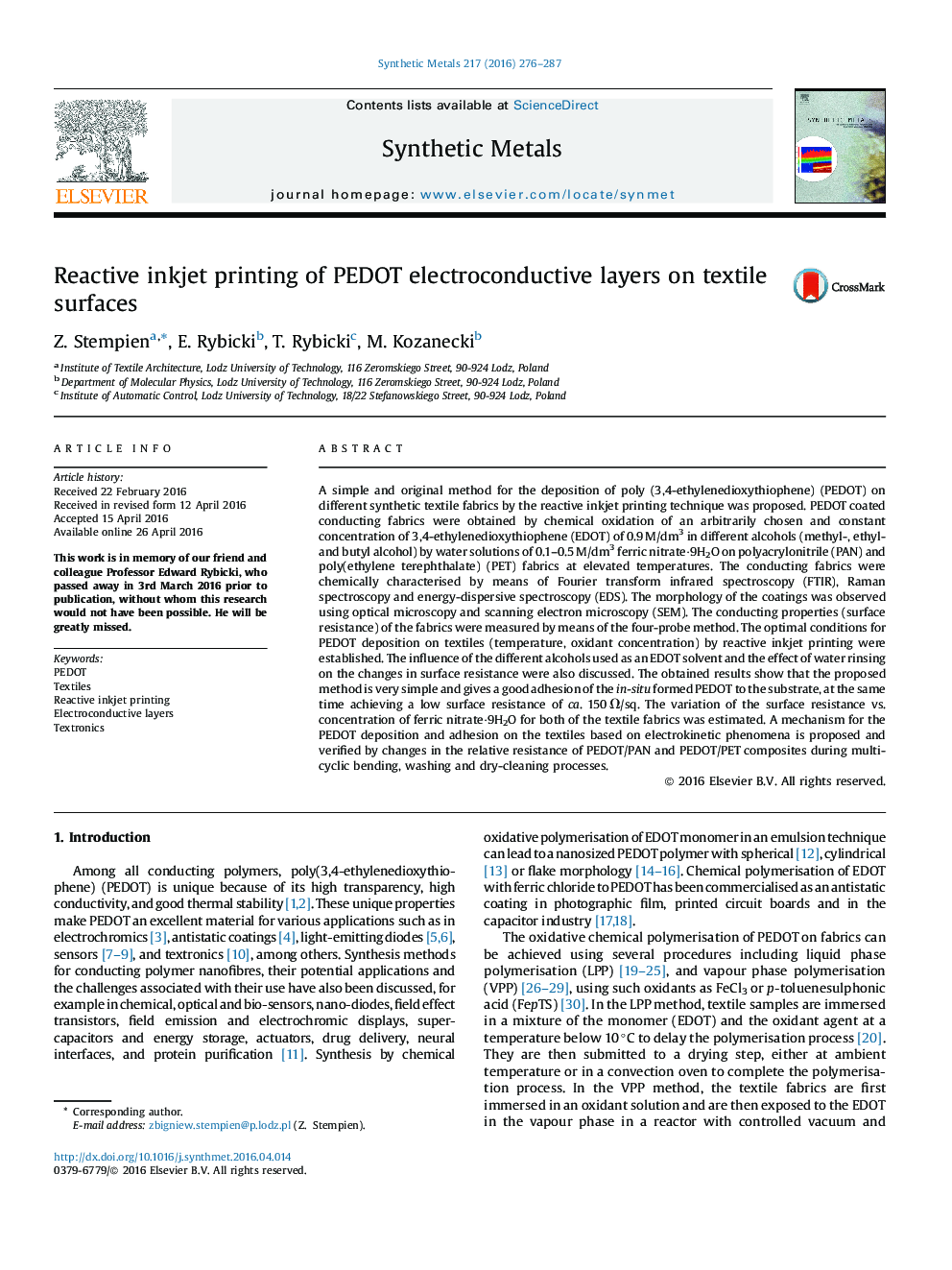| کد مقاله | کد نشریه | سال انتشار | مقاله انگلیسی | نسخه تمام متن |
|---|---|---|---|---|
| 1440201 | 1509360 | 2016 | 12 صفحه PDF | دانلود رایگان |

• A method of PEDOT deposition on textile fabrics via inkjet printing was elaborated.
• The conductive fabrics were characterized using the SEM-EDS, FTIR, Raman spectra.
• The optimal conditions of PEDOT deposition on textiles were established.
• The formed conductive polymer showed a good adhesion and low surface resistance.
A simple and original method for the deposition of poly (3,4-ethylenedioxythiophene) (PEDOT) on different synthetic textile fabrics by the reactive inkjet printing technique was proposed. PEDOT coated conducting fabrics were obtained by chemical oxidation of an arbitrarily chosen and constant concentration of 3,4-ethylenedioxythiophene (EDOT) of 0.9 M/dm3 in different alcohols (methyl-, ethyl- and butyl alcohol) by water solutions of 0.1–0.5 M/dm3 ferric nitrate·9H2O on polyacrylonitrile (PAN) and poly(ethylene terephthalate) (PET) fabrics at elevated temperatures. The conducting fabrics were chemically characterised by means of Fourier transform infrared spectroscopy (FTIR), Raman spectroscopy and energy-dispersive spectroscopy (EDS). The morphology of the coatings was observed using optical microscopy and scanning electron microscopy (SEM). The conducting properties (surface resistance) of the fabrics were measured by means of the four-probe method. The optimal conditions for PEDOT deposition on textiles (temperature, oxidant concentration) by reactive inkjet printing were established. The influence of the different alcohols used as an EDOT solvent and the effect of water rinsing on the changes in surface resistance were also discussed. The obtained results show that the proposed method is very simple and gives a good adhesion of the in-situ formed PEDOT to the substrate, at the same time achieving a low surface resistance of ca. 150 Ω/sq. The variation of the surface resistance vs. concentration of ferric nitrate·9H2O for both of the textile fabrics was estimated. A mechanism for the PEDOT deposition and adhesion on the textiles based on electrokinetic phenomena is proposed and verified by changes in the relative resistance of PEDOT/PAN and PEDOT/PET composites during multi-cyclic bending, washing and dry-cleaning processes.
Journal: Synthetic Metals - Volume 217, July 2016, Pages 276–287